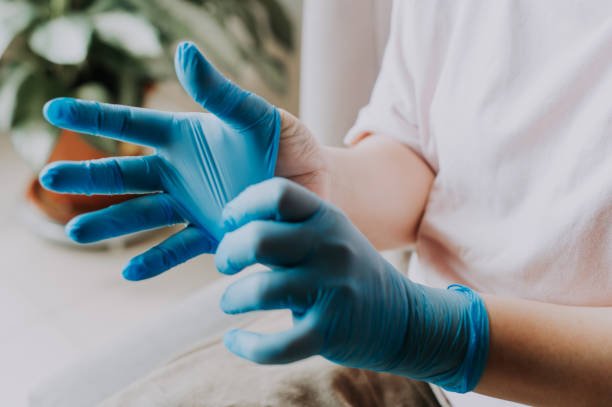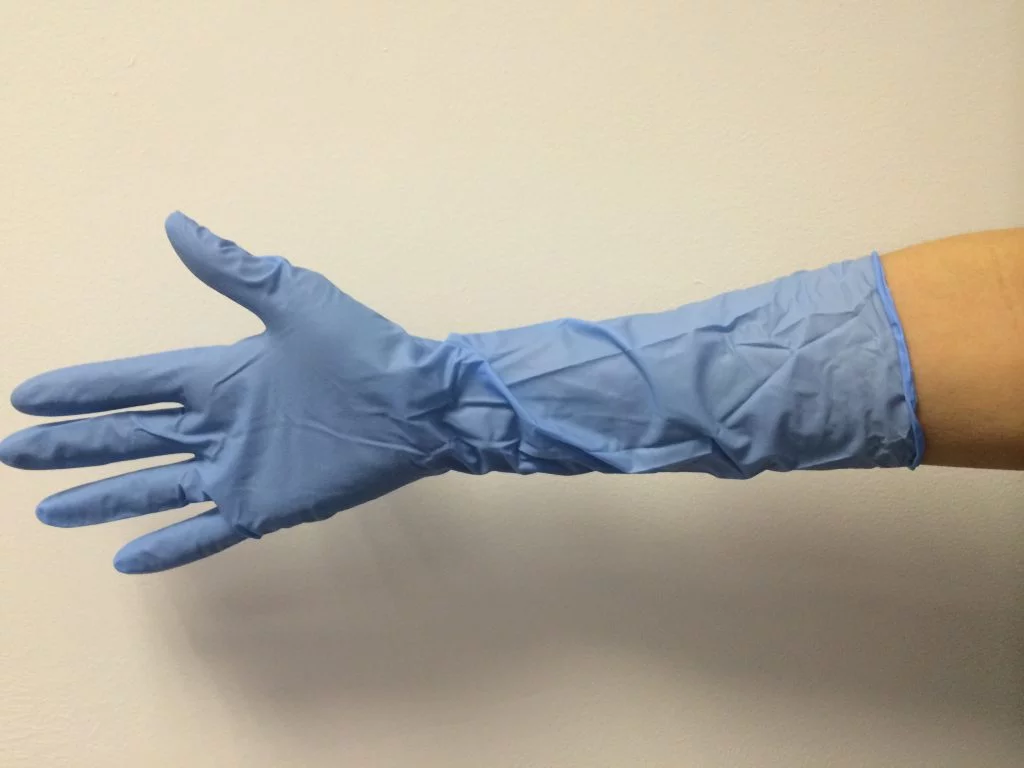The term “medical nitrile gloves” only applies to certain disposable nitrile gloves. The best nitrile gloves must adhere to Food and Drug Administration (FDA) quality assurance standards in order to be considered medical grade. These standards guarantee that all gloves used in medical environments are robust and trustworthy, not fragile or brittle. Nitrile gloves online must have an acceptable quality level (AQL) of no more than 2.5 in order to be used during patient exams. With the such grade, there can be no more than 2.5% of defective gloves in a batch. These gloves aren’t sterile, thus their AQL value must be considerably lower.

For their products to get a score of 2.5 or below, manufacturers must adhere to strict testing requirements. Only mechanical or industrial applications are authorized for gloves with an AQL of 4 or 5. Glove makers are required to practice strict quality control due to strict AQL regulations. The AQL rating matrix aids in ensuring that gloves used for medical applications are error-free. Healthcare workers and their patients may be exposed to infections or other pollutants due to tears or other quality problems.
You must choose an appropriate AQL rating based on your application. If not, use disposable gloves with lower AQL ratings for the highest quality. You may be able to locate industry standards. Remember that while examining patients, clinicians wear gloves with AQL ratings of 2.5 or below. In your setting, a comparable score would probably be sufficient unless you need them for surgery.
Nitrile Gloves
With a longer average shelf life than latex gloves, nitrile gloves are among the finest substitutes. An excellent non-sterile alternative is regular nitrile gloves. A nitrile glove devoid of latex and powder is resistant to chemicals, oils, and acids. These gloves are durable and resistant to punctures even when worn for lengthy periods of time thanks to the strength of nitrile. Nitrile gloves are a flexible, touch-sensitive option if latex allergies are a problem. Nitrile gloves are available in a range of colors and sizes in bulk purchases.
Non-Sterile vs Sterile
A glove must adhere to severe FDA regulations in order to be given the “sterile” classification. The highest AQL ratings are required for sterile medical gloves in order for them to be used during surgery. The acceptable quality level for sterile gloves is 1.5 or lower. Sterile gloves might be thought of as even safer given that examination gloves can have an AQL as high as 2.5, as was previously indicated. Sterilized gloves may cost more since they must undergo stringent testing during production. You can read about Ask yourself these questions before buying nitrile gloves by clicking here.
Nitrile Gloves: Powdered vs. Non-Powdered
Both powdered and non-powdered glove alternatives are available. Cornstarch coatings on powdered black nitrile gloves make them simpler to put on and keep them from clinging to one another. Although it may be more convenient, the FDA has outlawed the use of powdered gloves during surgery and patient examination.
Powdered gloves have more hazards than advantages in medical settings, according to the FDA. The powder might stick to the wearer’s skin and lead to allergic reactions, rashes, or irritation. Additionally, it may lead to surgical issues with peritoneal adhesions, a form of attachment between an individual’s organs. Although food service applications are not presently covered by the prohibition, contaminated food may be contaminated by loose cornstarch from powdered gloves. A glove that isn’t powdered is usually a better option.
Thickness of gloves
Consider the thickness of the gloves as well. A greater barrier of protection is offered by thicker gloves. Additionally, they are more tear-resistant, allowing for extended wear times. A heavier, more durable glove will provide greater thickness than a thinner, lighter glove.

However, a thicker glove could reduce touch sensitivity, which is undesirable in certain circumstances. You could use thinner gloves made of a strong substance, like nitrile, if your application calls for a high degree of touch sensitivity. Look for mil-based thickness metrics while comparing glove choices.
Sensitivity to Touch
There are several circumstances when having a high degree of tactile sensitivity is necessary. For example, a surgeon requires unhampered touch sensitivity to carry out surgery with the required level of accuracy and precision. Precision levels comparable to those of an ungloved hand will be possible with tactile-sensitive gloves constructed of lightweight material. Several other applications, such as food preparation, electrical handling, and medicines, may also need sensitivity.
Fit and Comfort of Gloves
Also take into account glove fit and comfort, including available sizes. Your personnel may need to wear gloves when doing difficult jobs, depending on your application. Additionally, they may need to keep their gloves on for a long time. It’s crucial to get comfortable gloves since a tight fit might make it difficult for someone to carry out their required duties.

Options for sizes are a crucial factor. A glove’s fit may be distracting and unpleasant if it’s too tiny since it could hinder blood flow to the wearer’s hand or make them irritable. Additionally, a glove that is too tiny is more prone to break, undermining its barrier of protection.
Other issues might develop if a glove is too big. Pathogens might enter the user via a gap between the glove and the skin. Additionally, prone to slide off is a glove that is excessively large, raising serious contamination concerns. Make sure you get gloves in a variety of sizes, preferably small, medium, and large.
Tensile Power
A material’s resistance to breaking when stretched or tugged is referred to as its tensile strength. Greater tensile strength indicates better tear-resistant gloves. Both nitrile and latex have high tensile strengths, meaning you can pull and push on them for a long time before they begin to rip. Tensile strength is crucial since a rip would impair a glove’s level of security. Recognizing it is crucial, particularly for tasks requiring hand dexterity.
Nitrile Gloves Colour
Even while you may not give glove color any thought, it can make a big impact. To make it simple for employees to distinguish between different glove kinds, you can decide to color code your nitrile gloves. For instance, you may pick black for non-latex gloves and blue for latex gloves so that those with latex allergies can easily choose the latter. Color labeling may be helpful if you need both the sterile and non-sterile nitrile gloves Australia has. You can also read about Disposable, Non-Sterile Gloves for Minor Surgical Procedures: A Review of Clinical Evidence by visiting https://www.ncbi.nlm.nih.gov/books/NBK470722/
Additionally, some glove colors make tears more noticeable. Tears will be seen if a dark glove is worn on top of a light glove. After a rip, you may quickly switch gloves to reduce the danger of contamination.
